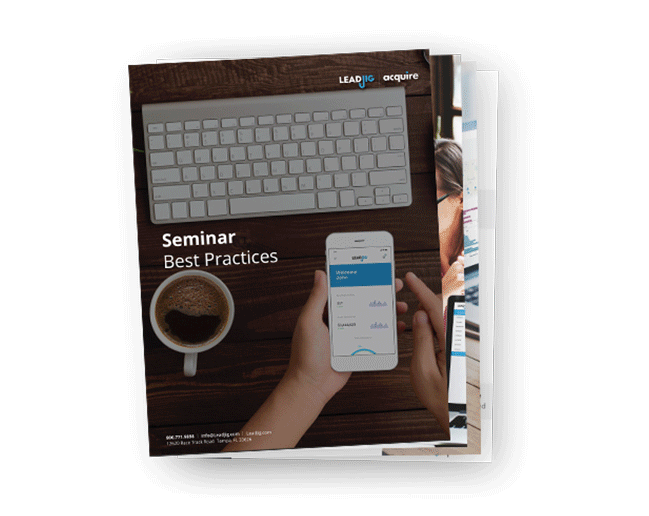How To Use Sponsored Content In Your Marketing Strategy
Enhancing brand recognition is at the core of any successful marketing strategy, but traditional advertising has become one of the least effective ways of capturing customer attention and loyalty. Instead, businesses increasingly turn to branded content—videos and photos, blogs and articles, and podcasts or live streaming—to engage audiences and reinforce their company’s core values and voice.
Unfortunately, creating original content is labor-intensive and may require more time or resources than your team can dedicate. If you want branded content results but don’t have the bandwidth to produce captivating and creative material to populate your platforms, using strategic sponsored content may be the answer. Done well, sponsored content marketing offers the recognition-boosting impact of branded content while shifting the heavy lifting of production to partnered companies, media outlets, or social media influencers.
Here we provide a roadmap for using sponsored content advertising as your secret weapon for an effective and engaging marketing strategy. Read on for the ultimate guide to sponsored content, including an in-depth sponsored content definition, examples of sponsored content, and practical tips for creating the best sponsored content.
What Is Sponsored Content?
Sponsored content, meaning promotional content, ranges from visual media (photos or videos) to written media (articles or blog posts). It is brand journalism that a company or brand pays a partnered publisher, brand, or influencer to create and distribute on their platform or publication.
Quality sponsored content is curated to be consistent with the surrounding visual or written media to create a seamless, authentic feel. Though it is an advertising tool in a more extensive marketing campaign, sponsored content is perceived as less invasive and more organic to the publication or platform. When companies partner with a trusted publisher, brand, or influencer whose audience overlaps with its target market and covers topics that align with its brand or message, the sponsored content is particularly effective.
Any mention of the sponsoring company or brand feels like a natural fit to the core audience. The message offers information and value, and the brand positions itself as a trustworthy and credible industry or thought leader.
Sponsored Content vs Native Ads
Sponsored content is a type of native advertising produced by the hosting publication or platform, working like a longer-form media placement rather than an intrusive advertisement.
A native ad, on the other hand, is more like traditional advertising with content produced by the advertising brand or company but designed to flow naturally with the surrounding content.
Though both sponsored content and native ads are crafted to look natural and avoid being disruptive, there are some crucial differences:
Sponsored content
Sponsored content is written and produced to be an engaging story that educates or entertains the core audience while enhancing a brand’s image and voice in a way that matches the tone of the publication or platform. This type of content is less restrictive than traditional advertising, so it offers more creative license—though it must be marked as “sponsored” or “promoted.” The sponsored content may mention a company or brand but remains focused on a story and “lives” on the host platform or website.
Because of its inherent flexibility, sponsored content can take a wide variety of forms. The most common sponsored content examples include articles or multi-media content in digital newspapers or magazines, blog posts on authoritative websites, video or photo content on influencer social media platforms, and sponsored stories or reports on podcasts or other broadcast journalism outlets.
Native Ads
Native ads are editorial content created directly by the advertiser that focuses primarily on their product or service. Rather than an entirely crafted story or independent piece of media content, a native ad generally consists of a headline, short description or snippet of copy, and photo with fonts, colors, and themes that match those of the hosting platform.
This type of advertising is more traditional, as the content itself “lives” on the advertising company or brand; the host’s webpage simply displays a linked ad and a CTA inviting readers to click through to the content.
Unlike sponsored content, native ads are more restrictive in their form. There are only six types of native ad formats that satisfy the definition of the Interactive Advertising Bureau (IAB), including:
- In-feed ads for publishing websites and social media platforms
- Paid search ads that appear at the top of a list of search results
- Recommendation widgets
- Promoted listings on shopping websites
- In-ad with native element units
- Custom ads
Sponsored Content Benefits
Since sponsored content is produced by known media outlets or social media influencers, it inspires trust in the audience. It’s more likely to engage a company’s core market and make the brand look more credible.
This marketing strategy produces higher brand lift and generates more leads than traditional types of advertising.
Read on for a list of additional benefits to incorporating sponsored content into your marketing strategy:
- Sponsored content adds to the user experience instead of disrupting it by placing quality informative or entertaining content alongside other things that the viewer enjoys.
- Sponsored content isn’t restricted to a single format or type of media but lends itself to varying platforms from print to social media and written or visual content.
- Sponsored content is a great way to forge partnerships to expand your target market to include your host platform’s core audience.
- Sponsored content provides the reach and engagement of branded content without requiring the time and resources to produce it.
Sponsored Content Platforms
Sponsored content can be an effective marketing tool for virtually any platform but is most often used as part of a digital strategy.
Consumers take in most of their news and entertainment online, so it only follows that brands and companies want to advertise where their potential customers already are. The primary platforms for sponsored content include:
- Online news or lifestyle outlets – A tourism board might purchase sponsored content in a digital travel magazine, or a car insurance company may support an in-depth reported story about road safety in a digital newspaper. This content can take the form of an article or listicle, a video or photo gallery, or even an infographic.
- Video or podcast episodes – Companies can sponsor a single video or podcast episode or an entire series covering a topic that intersects with their product or brand to engage a targeted audience.
- Social media photos, videos, or stories – Partnerships between companies and social media influencers have become one of the most popular forms of sponsored content, successfully leveraging online celebrities’ credibility to increase their audience.
Tips for Creating Sponsored Content
Does sponsored content work? Though it can be one of the most impactful tools in your marketing plan, sponsored content must be carefully curated to be compelling and reach your target audience in the most effective way possible. Here are a few helpful tips for creating successful sponsored content:
- Be creative. Sponsored content goes beyond articles and blog posts to include other popular platforms like YouTube and podcasts.
Consider your audience when choosing a platform, emphasizing Facebook or Twitter for an older demographic and TikTok or Instagram for a younger audience.
- Focus on quality. Create engaging content that informs or entertains to attract an audience and inspire trust.
If your content is enjoyable, your audience is more likely to consume it and potentially become customers. People will tune out if the content feels like it exists primarily to plug your product or service.
- Choose the right partner. The publishing outlet, company, or influencer who will create and host your sponsored content should align with your brand, product or service, and voice. An effective partner should share a similar audience, mission, and level of market trust.
Not only will this potentially expand your market, but it will enhance your brand recognition and credibility in a nonintrusive, organic way.
- Choose the right topic. Work with your partner closely to release content that is cohesive with your message, goals, and audience. Leverage their expertise or specialization to create creative content that steers away from the hard sell.
Sponsored content allows you to reinforce your brand credibility and reach new target markets without taxing your team’s limited time and resources to produce written or multi-media branded content.
Work with LeadJig
If you’re interested in using sponsored content as part of your financial marketing strategy and would like to learn more, contact our experts at LeadJig for innovative ideas and techniques.





